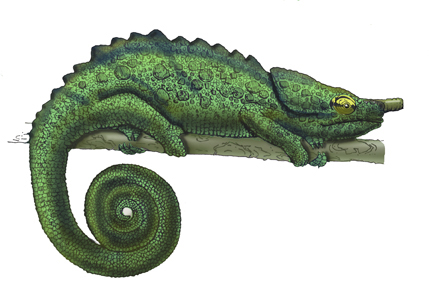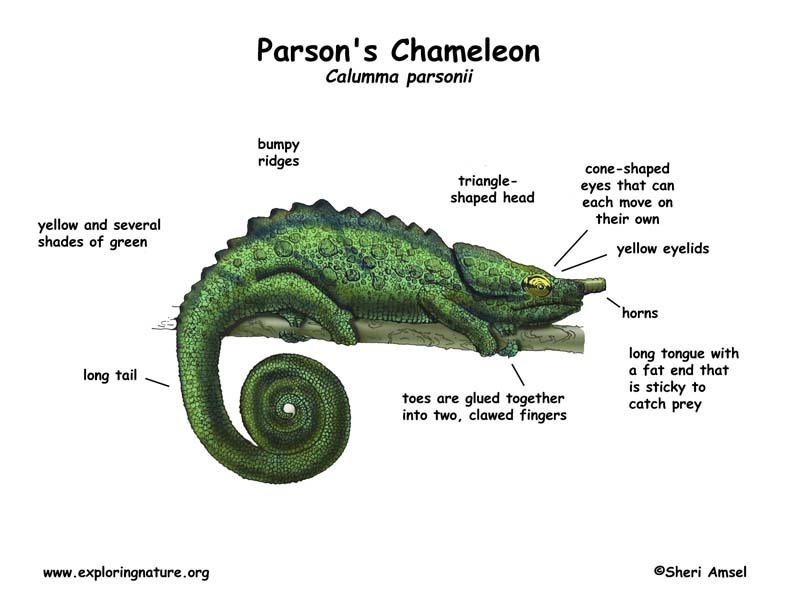

They are found on the island of Madagascar.
They live up in the canopy of the forest.
They are the largest chameleon in the world at 24 inches long (60 cm). They are yellow to several shades of green. They have a large, triangle-shaped head with bumpy ridges and horns. They have cone-shaped eyes that each move on their own, so they can look at two things at once. They have yellow eyelids. They have a very long tongue with a fat end that is sticky to catch prey. Their body is flattened from side to side. Their toes are glued together into two, clawed fingers. This helps them hold onto branches. They have a long tail.
Their skin can change color when the temperature or light changes or if they are alarmed or aggressive.
They eat insects, small birds and other chameleons.
They are killed by snakes and eagles. They are threatened by overcollection for the pet trade.
Females lay eggs in a hole they dig in the sand and then cover them over and leave them. They can take up to 2 years to hatch.
Unknown
Kingdom: Animalia
Phylum: Chordata
Class: Reptilia
Order: Squamata
Suborder: Lacertilia
Family: Chamaeleonidae
Subfamily: Chamaeleoninae
Genus: Calumma
Species: C. parsonii
When you research information you must cite the reference. Citing for websites is different from citing from books, magazines and periodicals. The style of citing shown here is from the MLA Style Citations (Modern Language Association).
When citing a WEBSITE the general format is as follows.
Author Last Name, First Name(s). "Title: Subtitle of Part of Web Page, if appropriate." Title: Subtitle: Section of Page if appropriate. Sponsoring/Publishing Agency, If Given. Additional significant descriptive information. Date of Electronic Publication or other Date, such as Last Updated. Day Month Year of access < URL >.
Amsel, Sheri. "Chameleon (Parson's)" Exploring Nature Educational Resource ©2005-2024. December 13, 2024
< http://www.exploringnature.org/db/view/Chameleon-Parsons >

